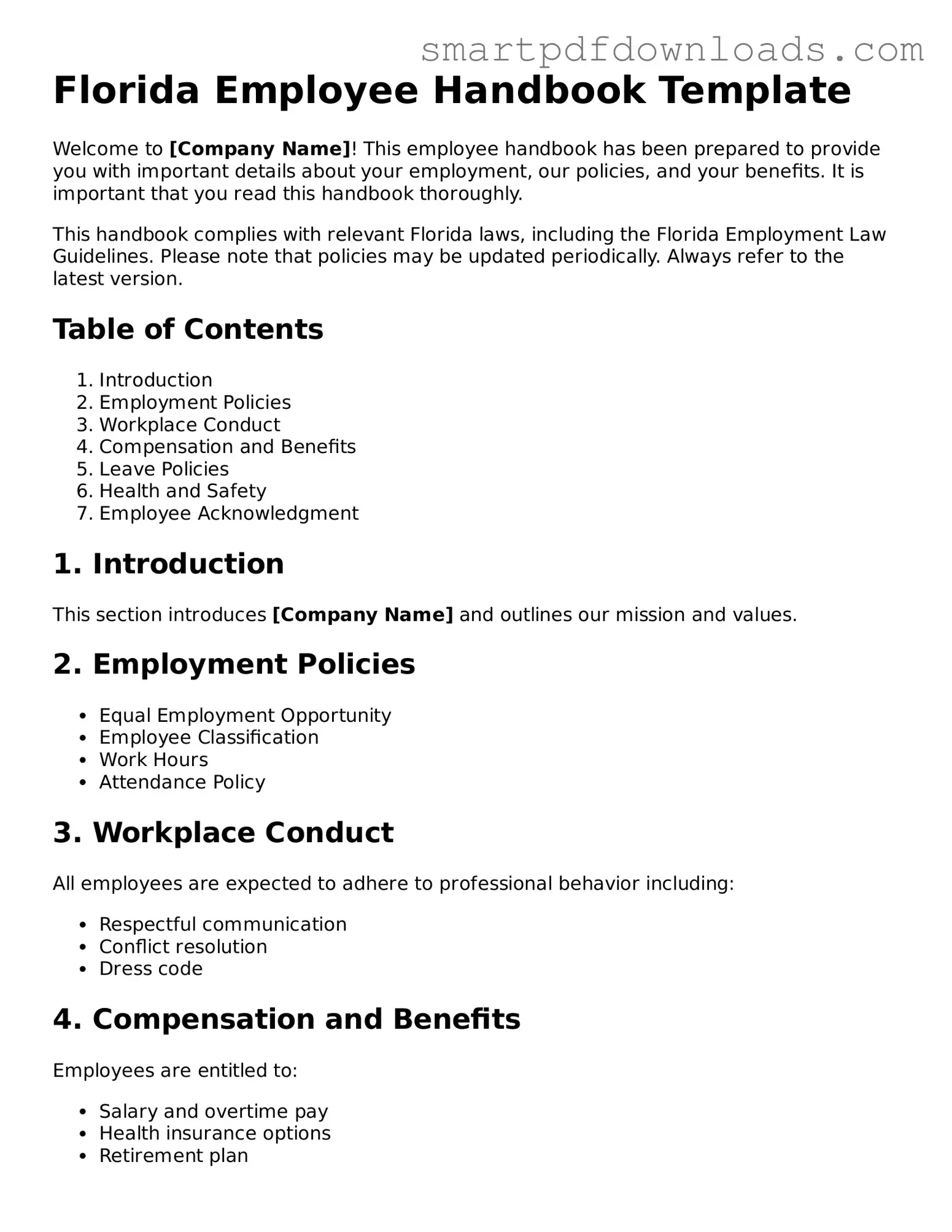Florida Employee Handbook Template
Welcome to [Company Name]! This employee handbook has been prepared to provide you with important details about your employment, our policies, and your benefits. It is important that you read this handbook thoroughly.
This handbook complies with relevant Florida laws, including the Florida Employment Law Guidelines. Please note that policies may be updated periodically. Always refer to the latest version.
Table of Contents
- Introduction
- Employment Policies
- Workplace Conduct
- Compensation and Benefits
- Leave Policies
- Health and Safety
- Employee Acknowledgment
1. Introduction
This section introduces [Company Name] and outlines our mission and values.
2. Employment Policies
- Equal Employment Opportunity
- Employee Classification
- Work Hours
- Attendance Policy
3. Workplace Conduct
All employees are expected to adhere to professional behavior including:
- Respectful communication
- Conflict resolution
- Dress code
4. Compensation and Benefits
Employees are entitled to:
- Salary and overtime pay
- Health insurance options
- Retirement plan
5. Leave Policies
We offer various leave options:
- Sick leave
- Vacation days
- Family and medical leave
6. Health and Safety
[Company Name] is committed to providing a safe working environment. Employees must:
- Follow safety guidelines
- Report hazards
- Participate in safety training
7. Employee Acknowledgment
Every employee should sign the acknowledgment form at the end of this handbook to confirm understanding of the policies within it.
By signing, you agree to follow the company's policies and understand your rights and responsibilities.
For questions, please contact [HR Contact]/[HR Email].
